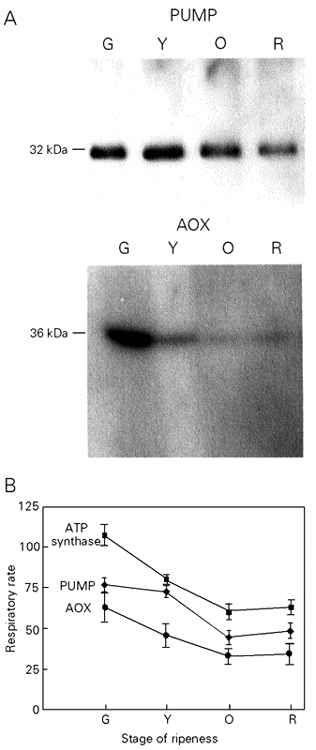Cyanide-resistant alternative oxidase (AOX) is not limited to plant mitochondria and is widespread among several types of protists. The uncoupling protein (UCP) is much more widespread than previously believed, not only in tissues of higher animals but also in plants and in an amoeboid protozoan. The redox energy-dissipating pathway (AOX) and the proton electrochemical gradient energy-dissipating pathway (UCP) lead to the same final effect, i.e., a decrease in ATP synthesis and an increase in heat production. Studies with green tomato fruit mitochondria show that both proteins are present simultaneously in the membrane. This raises the question of a specific physiological role for each energy-dissipating system and of a possible functional connection between them (shared regulation). Linoleic acid, an abundant free fatty acid in plants which activates UCP, strongly inhibits cyanide-resistant respiration mediated by AOX. Moreover, studies of the evolution of AOX and UCP protein expression and of their activities during post-harvest ripening of tomato fruit show that AOX and plant UCP work sequentially: AOX activity decreases in early post-growing stages and UCP activity is decreased in late ripening stages. Electron partitioning between the alternative oxidase and the cytochrome pathway as well as H+ gradient partitioning between ATP synthase and UCP can be evaluated by the ADP/O method. This method facilitates description of the kinetics of energy-dissipating pathways and of ATP synthase when state 3 respiration is decreased by limitation of oxidizable substrate.
plant mitochondria; alternative oxidase; uncoupling protein; regulation; electron partitioning












